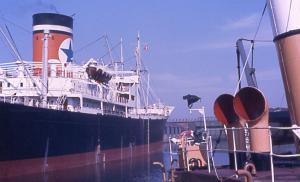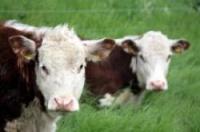From evolution to revolution and beyond
A history of natural sausage casings in the U.K.
If you were to enter the words 'sausage history' in to your search engine you will probably come
across the following information:
Epichamus (ca. 550 BC - ca. 460 BC) wrote a comedy titled 'The sausage'
The dictionary states that the word 'tradition' as coming from the Latin word 'traditio' which means 'to hand down' or 'to hand over' and is defined as a belief or custom taught by one generation to the next.
So, for around 3000 years it has been a belief or custom, handed down from generation to generation, that sausage casings be made
from the intestines of animals.
From the very dawn of civilisation natural casings have been made from the intestines of sheep, goats, pigs and beef but surprisingly little changed, during the intervening millennia, in the way in which the intestines of these animals were turned into fill-able sausage casings.
In simple terms, the basic procedure, after the removal of waste matter, is to clean (scrape) the mucosa level from the inside of the intestine leaving a thin skinned tubular membrane which is then further washed and salted or dried for preservation.
Finishing procedures such as grading, selecting for quality and calibre and measuring are then carried out to produce the finished article.
From the very beginning all these processes were carried out by hand and still are in some parts of the world but history moves on and
so did that of natural sausage casings production.
REVOLUTION
In the mid 19th.century, during the second industrial revolution, there were two significant developments which would radically change
the whole of the meat trade including that of natural sausage casings.
These were the emergence of ocean going steamships and refrigeration.
Any revolution either industrial or otherwise need to be fed. Far away
countries with huge meat producing capacities were suddenly able
to get their meat to Europe within weeks rather than months.
From farm to fork, as they say, in relatively no time at all and frozen which
at that time was as near to fresh as to make no difference.
During the ensuing decades meat factories the size of small towns were being built in South America,
Australasia and the U.S.A.
Meatworks which could process thousands of animals each day. Beef from Argentina and Brazil, Lamb
from New Zealand and pork from America.
Along with these huge meat productions there also came what is known as
the 'fifth quarter'
Hides, skins, wool, offal and , of course, casings.
Meat was flooding in and in just about every country in Europe people
wanted more and more of their most convenient of convenience food - sausages
Slaughterhouse techniques and machinery had evolved rapidly to
handle these huge numbers and the handling of the intestines was
forced to develop new techniques and machinery just as fast.
The scale of these meat-works made it necessary for the initial parts
of the natural casings process to become mechanised not necessarily
for economic reasons but simply to keep up with the throughput and
demand.
Highly sophisticated machinery was developed and is still being
developed to carry out much of the process but, even today,
the production of high quality natural casings still requires
the final processes to be carried out by hand.


Sausage production, prior to this time, tended to be localised as were the casings producers. Small family
run businesses producing the local speciality sausages and the casings required for them.
With a plentiful meat supply sausage production grew and so did the demand.
Local sausage producers evolved into major companies as did the local casings producers who in turn would import ungraded casings from the major meat producing countries to be graded into the type required
for that particular speciality sausage. Many of today's leading natural casings companies can trace their
history back to the small family run business.
INDUSTRIALISATION
Following developments started in the last quarter of the 19th century, for the next century, the meat trade was
at its most prolific with what might be called the industrialisation of meat production and distribution.
By the turn of the century huge meat companies founded in the were
controlling meat production in South America, New Zealand & Australia.
The animals were reared on their farm, slaughtered in their meat works,
shipped in their reefer ships (refrigerated ships), the frozen meat was
held in their cold stores before being sold through their butchers
shops or made into sausages in their sausage factories.
As a consequence most of the product from these meat works was routed
through the U.K. with London and Liverpool being the main entry ports.
This was an age before containerisation so frozen carcasses, bales of wool and wooden barrels of casings had literally
to be manhandled through these docks.
As far as casings were concerned thousands of barrels of New Zealand and Australian sheep casings and American hog casings were landed every year London and Liverpool docks mainly to serve the home sausage makers with natural skins for chipolata and pork sausages respectively.
Beef casings from Brazil and Argentina, mainly used in the production of continental sausage, were more likely to
be shipped directly to mainland Europe through Rotterdam and Hamburg.

At that time all natural casings were salted and packed into wooden
barrels (tierces), topped up with brine (salt saturated water) which kept the
casings in perfect condition during transit.
A barrel of sheep casings from New Zealand weighed 6 cwt. (305 kilos)
and contained appx. 34 miles (55 kilometres) of casings in length,
enough to produce over 26 tons (60,000 kilos) of sausages.
Intestines from roughly 2500 sheep in each barrel.
The U.K. meat trade was centred at Smithfield Market in the centre of London
and the volume of natural casings being imported led to the establishment
of a number of natural casings dealers, importers and brokers in that area.
This section of the trade would procure supplies from the large meat companies to sell either to sausage factories
or other dealers/importers throughout the world.
Major dealer and natural casings companies were also established in New York, Hamburg and Rotterdam.
There were a considerable number of natural casings companies operating in the U.K. that in 1940s it was decided
to form an association. The Association of Casings Importers (ASCIM) was created which in time would become
the Natural Sausage Casings Association (NSCA).
This was the golden age of the natural casings industry but things were about to change.


AUTONOMY
Again there were two significant factors that would have a drastic effect particularly that of the natural casings trade in the U.K.
Firstly the main meat producing countries and meat factories wanted autonomy.
Whilst still ostensibly British owned they wanted commercial independence and to be able to trade directly with the
established overseas markets without having to go through the U.K. As communications and transportation links improved
this became easier and a new pattern of trade developed.
This, of course, meant less product being routed through the U.K. but most significant, for the natural casings trade, was that
by the early 1960’s artificial sausage skins had been invented and were starting to be marketed commercially.
These artificial sausage skins are collagen, obtained from the fleshing of cow hides, reconstituted with various chemicals
and extruded to form a tube which could be filled with sausage meat.
With more and more natural casings were being sold away from the U.K. and with new markets emerging, most notably Japan
which was importing significantly increasing numbers of sheep casings from Australasia, the competition for supplies of
natural casings increased and so did the value.
Despite the steadily increasing prosperity of the post war years consumers here still wanted cheap food.
Other low priced convenience foods were coming on to the market and the pressure for sausage manufacturers to keep their
costs down meant most of the major sausage makers turning their production over to artificial skins coupled with
cheaper ingredients to produce low price or so called ‘economy’ sausages.
COMMITMENT
Such was the steep decline in the number of natural casings being imported that most of the U.K. casings importing companies
went out of business but despite the downturn natural casings were still very much in demand for the production of high
quality traditional sausages and there was a sector of the trade which was willing to meet this demand.
The high volume meat technology that was developed had also been exported to Europe with lamb, pork and beef rearing areas
such as Britain and Ireland building large abattoirs able to supply the home market with truly fresh meat in quantity and cheaply.
Whilst large by European standards these abattoirs were relatively small compared to those of the Southern Hemisphere
and generally did not justify the on site processing of the intestines.
This led to the development and expansion of home based natural casings processors collecting ‘green’ casings (intestines with
the waste removed) from the abattoir then be transported back to their premises for further cleaning and finishing processes.
Today these processors have evolved into highly sophisticated natural sausage casings producers who, in addition to supplying
the growing home trade for traditional product, are producing natural casings for export to all parts of the world.
Just as the demand for high quality sausages in traditional natural sausage casings increases and gathers momentum so does
our commitment to provide these sausage makers with the very best product.

Today's discerning consumers are aware that good quality sausages made with traditional
ingredients offer the best value for money and we are pleased to play our part
and give support to the renaissance of traditional sausages.
The history of natural casings is still being written as consumers are, rightfully,
demanding traditional, safe, ecologically and environmentally sound foods and
food production.
The challenges of the past were met and the members of the Natural Sausage Casings Association are meeting today's challenges.
To produce the very best natural sausage casings is a belief and a custom which has indeed been handed down from
generation to generation.
We are determined to maintain this - it is our tradition










